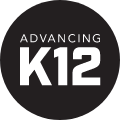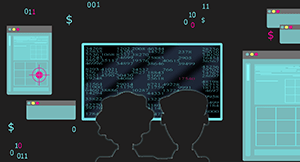
Computational thinking: It’s a term you’ll be seeing a lot of in the years to come, but what does it really mean and why do we expect it to be emphasized in the next wave of elementary education initiatives?
The answer can be found in the ongoing crossover between STEM and other disciplines, or, more specifically, the vanishing boundaries between the two categories. Data literacy, algorithmic thinking, and—most importantly—adaptability are becoming baseline qualifications for even non-STEM jobs.
In the words of Kelvin Droegemeier, vice chairman of the National Science Board, “Millions of workers who aren’t typically understood to be ‘STEM workers’ need these capabilities to be successful, and businesses need individuals with these skills to be globally competitive.”
As schools throughout the country continue to expand their STEM curriculum, including full K-12 computer science tracks for kids in some districts, some are starting to change the way they talk about this shift.
“Teaching kids to code” has been a rallying cry for a number of years, but the desired outcome has more frequently evolved into “teaching kids to think like coders.” Yes; it’s a matter of semantics, but it’s also more than that—it’s a whole new set of learning objectives. Here’s why that distinction matters:
1) “Coding” comes with baggage
With all the time and money we have poured into making STEM more desirable and accessible, computer science remains a mostly white, mostly male field of study. As a result, more students with those same demographic characteristics will be exposed to the idea of coding from an early age and encouraged to pursue those educational offerings when they are available.Students from underrepresented groups, or even white, male students whose families do not value the discipline as much, are more likely to look at a programming class as a less-than-ideal fit for their interests and expectations. By not pursuing the coding classes available to them, these same kids will fail to absorb the ultra-valuable computational thinking skills mentioned above, thus putting them at a cognitive disadvantage and making them less competitive for college admission and/or careers.
That’s why computational thinking, when delivered and emphasized across disciplines, without necessarily always having direct ties to computers or programming languages, is so important. If we start with the mindset, breaking down the mental barriers to entry by removing the shroud of mystery, students may be more apt to take up related fields later on. If not, at least they’ll have had a chance to hone the indirect skills so many employers are looking for.
2) Non-STEM jobs sure could use more problem solvers
Talk to any middle-to-senior-level manager and you’ll hear a lot of, “We need more people who can see the big picture, think for themselves, and deliver creative solutions with minimal guidance.”Young professionals are entering the workforce with an array of highly specialized technical skills, but critical thinking remains at a premium. High-performing employees can be divided into two categories:
- Those who are really good at following someone else's step-by-step instructions
- Those who develop, iterate, and improve upon the step-by-step instructions
The people in the first group can still enjoy long, fulfilling careers, but companies are relying on the second group to become the next generation of leadership.
ISTE’s 2011 operational definition of computational thinking for K-12 education sheds more light on the skills supported by computational thinking, including (our translations added):
- Confidence in dealing with complexity (don’t freeze up when something unexpected happens)
- Persistence in working with difficult problems (show grit)
- Tolerance for ambiguity (craft viable solutions in the absence of a step-by-step guide)
- The ability to deal with open ended problems (work in the grey)
- The ability to communicate and work with others to achieve a common goal or solution (be a good culture fit)
Those aren’t just the attributes of a strong programmer. Those are the attributes of a strong employee.
3) Why not?
It’s too easy to get wrapped up in the “compu” part of “computational thinking,” but all we’re really talking about is problem solving. The push for computational thinking is conveniently aligned with some of the more established, research-based initiatives in K-12, such as project-based learning. When you look around your own school or district, chances are you will find classes, programs, and cultures already supporting these same objectives.The purposeful introduction of computational thinking in the early educational years is nothing more than a natural extension of some of the more tried and true reforms from the past twenty years. Much like anything else, the odds of successful implementation will skyrocket when accompanied by healthy doses of transparency, communication, and collaboration.
Looking ahead
Let’s be clear—there are plenty of coders in the world who do not possess the skills we would typically associate with computational thinking. Some perform better in a more rigid, structured environment, while others prefer to be given an end goal and set free to get there however they see fit. The same contrast we see between the most technically skilled musicians and those who have become masters of freeform artistry can be found in most fields, including computer science.The challenge for school leaders in the next decade will be figuring out how to transfer the benefits of computational thinking to as many students as possible. Equity, professional development, and recruiting will be at the forefront of many of these discussions, just like they have so many times in the past.
As we look around at a world where the rise of automation and artificial intelligence will almost certainly change the workforce as we know it forever, the argument can be made that this is one challenge we can’t afford to sit on.
Follow-up resources: Lesson plans, frameworks, and further reading
- Exploring Computational Thinking (Google for Education)
- Computational Thinking Lesson and Teaching Guide (Code.org)
- Computational Thinking Across the Curriculum (Eli Sheldon on Edutopia)
WHAT'S NEXT FOR YOUR EDTECH? The right combo of tools & support retains staff and serves students better. We'd love to help. Visit skyward.com/get-started to learn more.

|
Advancing K12 Staff Edtech Thought Leaders |




